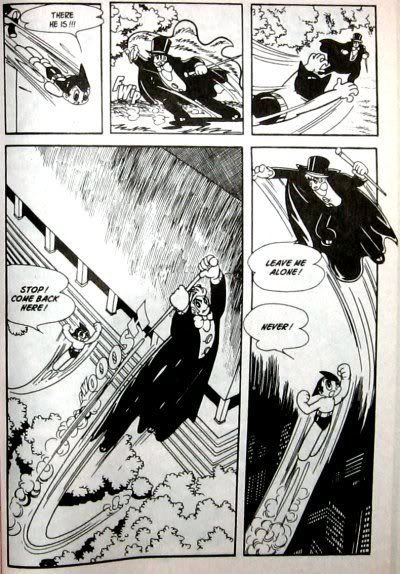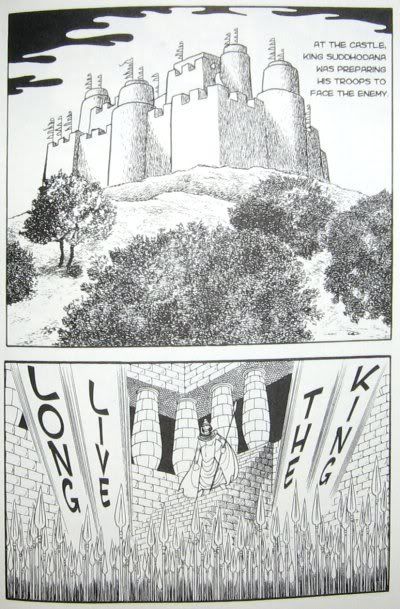The Tezuka exhibition in Syndey was outstanding. I went for the last two days, and the guided tours were run by different people and had notably different angles. The first guide talked more generally about his work and covered all the titles in the exhibition, while the second talked in more detail about only a few works and emphasised more of Tezuka's background and motivation.
On display were some of Tezuka's original drawings from Metropolis, Jungle Emperor (Kimba the White Lion), Astroboy, Princess Knight, Wonder 3, Phoenix, Bomba!, Eulogy for Kirihito, Human Metamorphosis, Mervellous Melmo, Song of Apollo, Buddha, Black Jack, MW, Crime and Punishment, and Ludwig B. They were all in seperate sections with information boards about them. There were also a few pieces from Vampires, Dororo, The Crater, Record of Glass Castle, New Ryosaishii The Spider, Transparent Brain, The Travels of Lolo, Say Hello to Bookila!, and Dari the Robot Nurse.
Until this exhibition, the only manga I'd read of Tezuka's was Astroboy. I didn't think the visual quality was that great, but I read it anyway because I was already an Astroboy fan. But seeing some of his other work made me realise that Astroboy is nowhere near his best work, at least on a visual level. According to the exhibition book, "Tezuka often criticised Astro Boy, once declaring it to be the worst manga he had ever made and nothing more than a vehicle to get richer and gain further popularity" (Tetsuo Sakurai). So if Astroboy is the only manga of Tezuka's you've read, give his other works a try.
After the exhibition I went shopping for Tezuka manga. I found some volumes of Nextworld (1 and 2), Phoenix (6 and 9), and Buddha (1 and 2). Phoenix and Buddha are amazing.
For a comparison, here's a good picture from Astroboy:

And here's one from Buddha:

The detail is amazing throughout. (And to think he averaged 10 pages every day for 40 years, on top of running anime studios, television appearances, and earning a medical degree.
The stories in Buddha and especially Phoenix are really powerful. The stories in Astroboy convey Tezuka's Message ("What I try to appeal through my works is simple..."), but not as much as what I've read so far in Buddha and Phoenix. The concepts are also more mature, with more focus on life and death and questions of love and suffering and existence. Astroboy is only a piece of the message Tezuka was trying to convey.
Another thing that struck me about the exhibition and from reading the exhibition book was how much Tezuka changed manga. We all hear about how he was the "God of manga", but what does that really mean? The book shows some pictures of manga before Tezuka brought his influence to it. The difference is stark but hard to put into words. Tezuka brought a cinematic flow to stories. Instead of static pictures with text describing what was happening, he drew in speed lines and onomatopoeia, camera angles and vanishing points. He added frame margins and spaced out the action, making it look like a movie storyboard. It's like switching from Jim Davis' Garfield to Naoki Urasawa's Pluto.
I recommend everyone buy a volume of Buddha or Phoenix and be amazed.
It's a pity more of his work hasn't been translated. I'd like to read Bomba!, Dororo, The Travels of Lolo, The Crater, and Eulogy for Kirihito.



